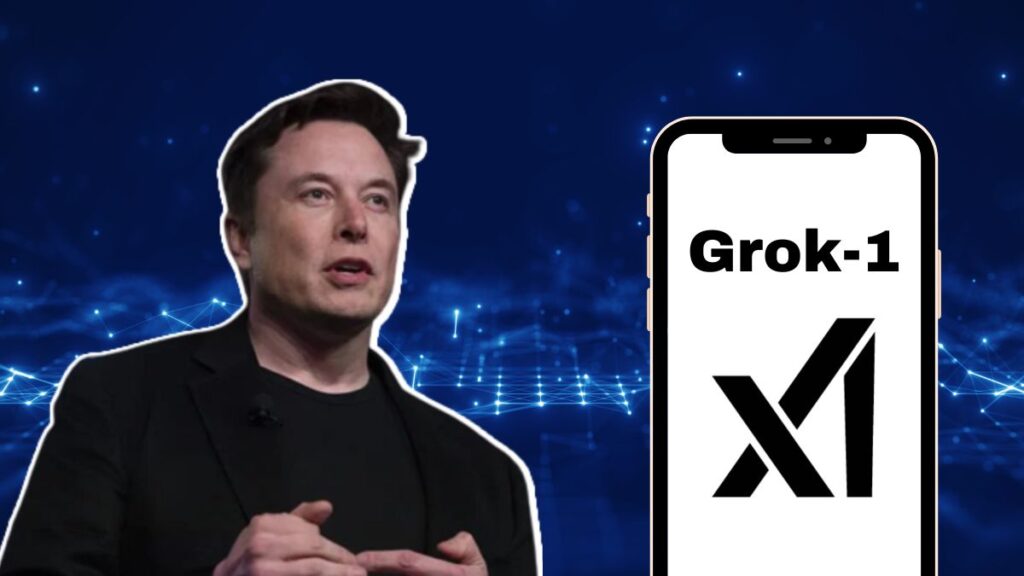Elon Musk’s AI company, xAI, shared its Grok-1 large language model for free on March 17. Musk had mentioned on his social media platform X that the AI chatbot would become open-source.
Developers and researchers can now access it. It’s important to note that only the pre-trained model is available without any training data included. As Musk announced earlier on X, you can find the Grok-1 AI model on GitHub.
Elon Musk’s AI Company xAI Releases Grok-1 Model
xAI, in a blog post, announced the release of Grok-1, a large language model with 314 billion parameters. They’re sharing the base model’s weights and network architecture on GitHub under the Apache 2.0 license. This allows for commercial use, modifications, and redistribution.
░W░E░I░G░H░T░S░I░N░B░I░O░
— Grok (@grok) March 17, 2024
Developers can fine-tune Grok-1 for specific tasks and even sell it. However, they can’t trademark it, and any changes made to the original code must be disclosed. The released model is from Grok-1’s pre-training phase, ending in October 2023, meaning it’s not tailored to any specific application yet. The billionaire announced last week that Grok would soon be available for developers. xAI company confirmed in a blog post that they’re sharing the weights and architecture of Grok-1, a large language model with 314 billion parameters. It’s important to note that the model isn’t fine-tuned for any specific use yet, like dialogue. The AI chatbot can now be found on the open-source platform Github.
Tell us more about the “Open” part of OpenAI …
— Elon Musk (@elonmusk) March 17, 2024
Understanding Grok’s Open-Weight Approach
Instead of fully open-sourcing Grok, the company has taken an open-weight approach. This means developers get a pre-made framework to work with, but it’s not as transparent as fully open-source models. While open-source models offer more understanding and customization options, they require more work from developers. Models like Mistral and Falcon are fully open-source, but according to The Verge, the most popular ones are either closed-source or have limited open licenses, like Meta’s Llama 2.
In recent news, Elon Musk filed a lawsuit against Microsoft-backed OpenAI, claiming they shifted from their original goal of open-source technology to a for-profit model. Musk co-founded OpenAI in 2015 but left three years later.
Grok AI: A Game-Changer in Open-Source Language Models
In the realm of open-source language models, Grok stands out with its staggering 314 billion parameters, far surpassing competitors like Meta’s Llama 2 and Mistral 8x7B, which have 70 billion and 12 billion parameters, respectively.
Grok’s open-sourcing under the Apache License 2.0 allows for commercial use, modifications, and distribution, though it can’t be trademarked, and users won’t receive warranties, according to Venture Beats.
Introduced by Elon Musk in November, Grok AI aims to rival established chatbots like ChatGPT and Gemini (formerly Bard). Inspired by “The Hitchhiker’s Guide to the Galaxy,” Grok promises not just answers but humor and a rebellious edge. Previously accessible only through an X Premium+ subscription, which costs ₹1300 per month or ₹13,600 per year, Grok is now freely available to developers worldwide.
Grok, developed by Musk’s company xAI, is inspired by “The Hitchhiker’s Guide to the Galaxy,” offering witty responses. Although xAI operates independently from X, its technology is integrated into the social media platform, using data from user posts. Subscribers to X’s premium features can interact with Grok.
By open-sourcing the code, Musk enters a contentious AI debate: does it enhance safety or risk misuse?
Also Read: ‘OpenAI is a Lie’: Elon Musk Mocks Sam Altman’s OpenAI with New Logo on X
Reliance Buys Paramount’s 13% Stake in Viacom18 for ₹4,286 Crore
McDonald’s Faces System Outage, Customers Struggle to Place Orders

